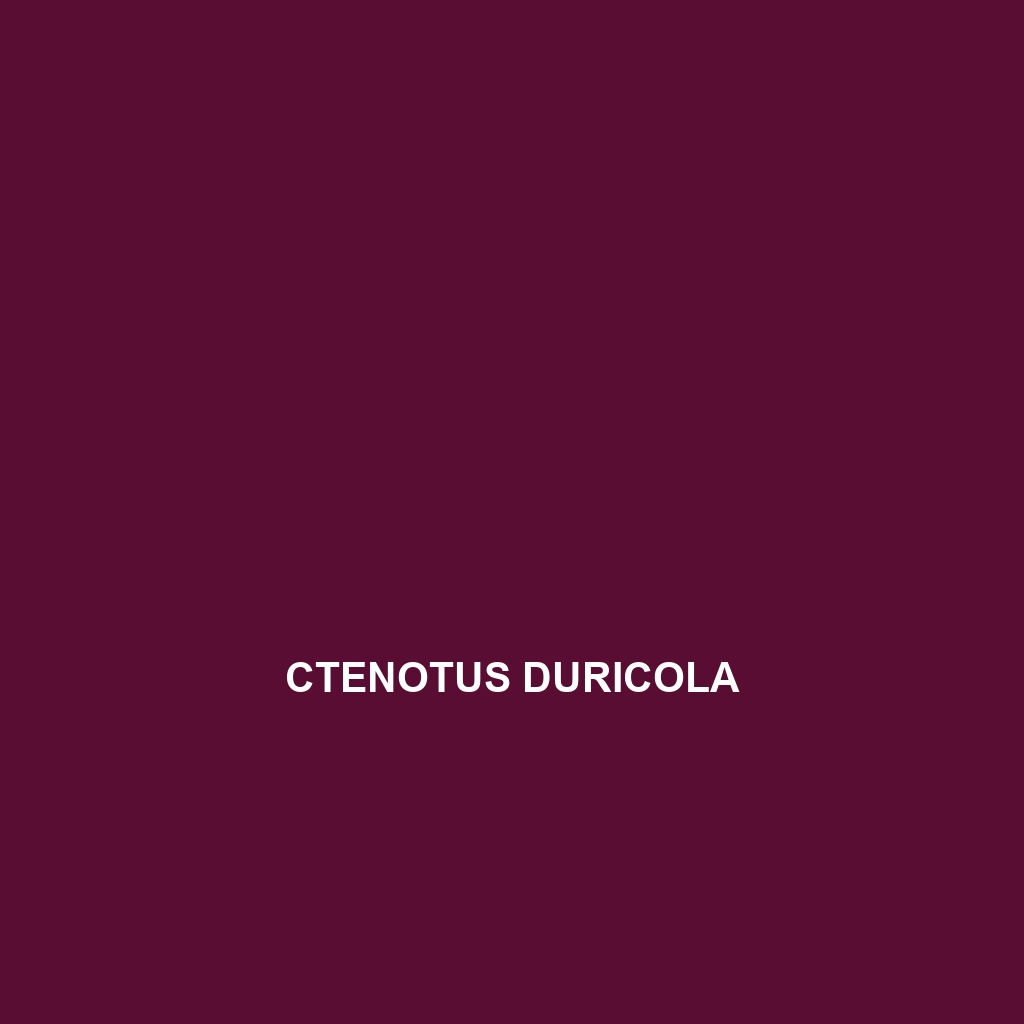Ctenotus duricola: Species Description
Common Name: Ctenotus duricola
Scientific Name: Ctenotus duricola
Habitat
Ctenotus duricola, commonly known as the durable ctenotus, is primarily found in the arid regions of central Australia. This species thrives in dry, sandy environments, often preferring sparse vegetation and open landscapes such as grasslands and scrublands. The durable ctenotus exhibits adaptability to various habitats, including rocky areas and arid woodlands, allowing it to occupy a broad geographic range within its native continent.
Physical Characteristics
The durable ctenotus is a medium-sized skink, measuring approximately 10 to 15 centimeters in length. Its coloration is typically a mix of brown, gray, or tan which helps it blend seamlessly into its sandy environment. This species features a distinctive pattern of stripes or bands along its body, providing effective camouflage. Additionally, it possesses elongated limbs and a slender body shape, which contribute to its swift movements across the ground.
Behavior
Ctenotus duricola is primarily diurnal, engaging in activity during daylight hours. This skink is known for its quick reflexes and agility, enabling it to escape predators swiftly. It often utilizes burrowing techniques to hide from threats and regulate its body temperature in extreme weather. Socially, these skinks are generally solitary, although they may share burrows or basking sites, particularly during cooler mornings.
Diet
The diet of Ctenotus duricola consists mainly of small insects and invertebrates, including ants, beetles, and grasshoppers. This skink is known for its foraging behavior, actively hunting for food throughout its habitat. Its feeding habits play a crucial role in controlling insect populations, highlighting its significance within its ecosystem.
Reproduction
Ctenotus duricola exhibits oviparous reproduction, meaning it lays eggs. The breeding season typically occurs in the warmer months, with females laying clutches of 4 to 6 eggs in sandy substrates. After an incubation period of approximately 6 to 8 weeks, hatchlings emerge, fully developed and capable of independent survival. Maternal care is minimal, with the female only protecting her eggs until they hatch.
Conservation Status
Currently, Ctenotus duricola is classified as a species of Least Concern by conservation organizations. However, habitat loss and climate change pose risks to its population stability. Continued monitoring is essential to ensure that this species does not face threats that could lead to a vulnerable status in the future.
Interesting Facts
One fascinating aspect of Ctenotus duricola is its remarkable ability to adapt to rapidly changing environmental conditions. This species can tolerate extreme temperatures and can often be found basking on sun-heated rocks to maintain optimal body temperature. Additionally, their skittish behavior and speed make them a challenging target for predators, enhancing their survival rates.
Role in Ecosystem
Ctenotus duricola plays a vital role in its ecosystem as both a predator and prey. By controlling insect populations, it helps maintain ecological balance. Additionally, as a food source for larger predators, such as birds of prey and snakes, the durable ctenotus contributes to the food web, showcasing its importance in environmental interactions.
